- Administrator
- Albums and Singles
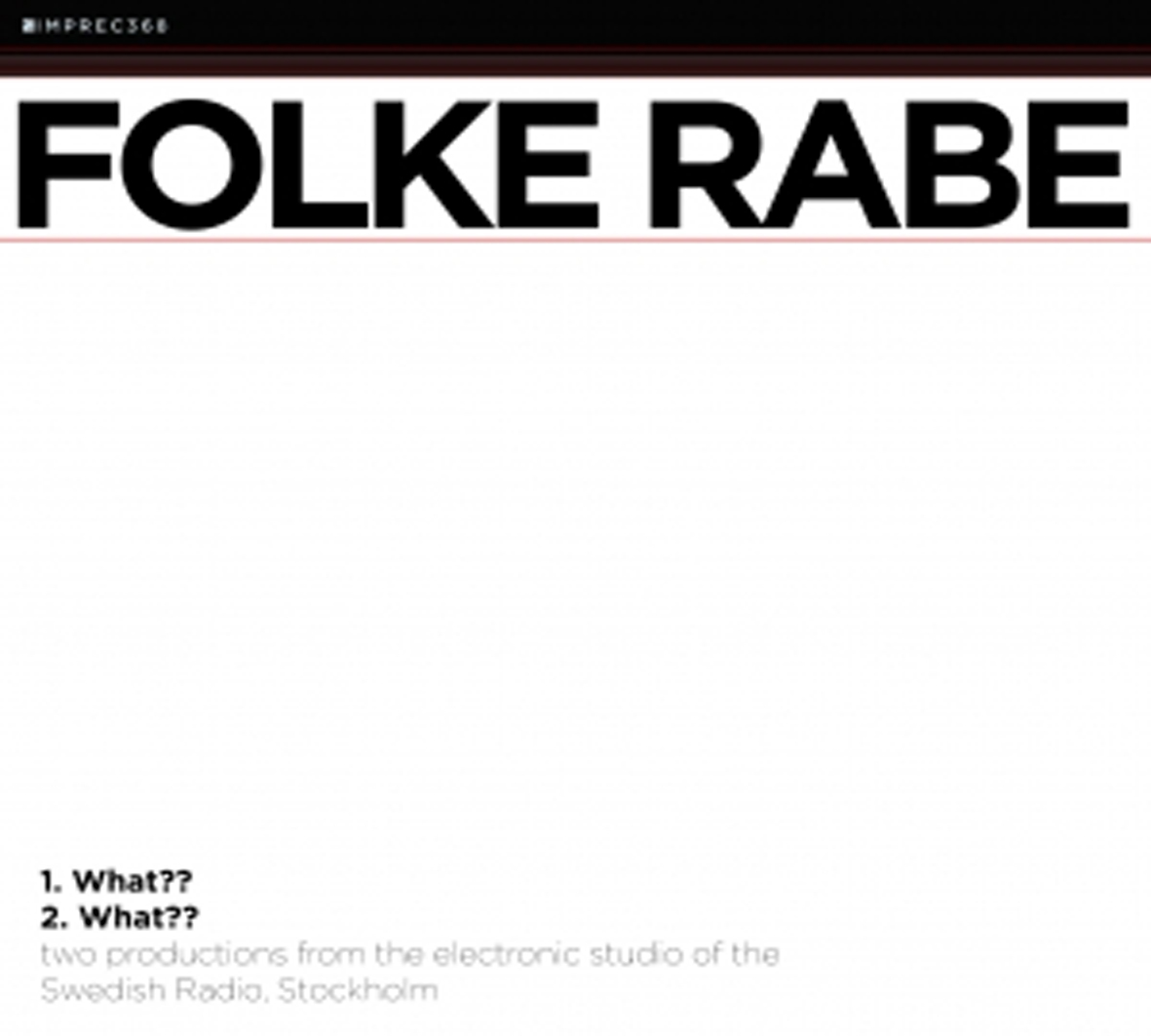 Important Records keeps their recent string of excellent minimal drone albums intact with this long-neglected gem from the distant past.  Originally released back in 1970 as Was?? on a split with psych legend Bo Anders Persson (Pärson Sound), What?? has woefully only re-surfaced once in the ensuing four decades (in 1997 on Jim O'Rourke and David Grubbs' Dexter's Cigar imprint).  While it sounds quite contemporary today, I cannot begin to imagine how it was originally received, as it is essentially nothing less than an uncomfortably dissonant rejection of nearly every major aspect of Western music (composed at the height of rock's supremacy, no less).
Important Records keeps their recent string of excellent minimal drone albums intact with this long-neglected gem from the distant past.  Originally released back in 1970 as Was?? on a split with psych legend Bo Anders Persson (Pärson Sound), What?? has woefully only re-surfaced once in the ensuing four decades (in 1997 on Jim O'Rourke and David Grubbs' Dexter's Cigar imprint).  While it sounds quite contemporary today, I cannot begin to imagine how it was originally received, as it is essentially nothing less than an uncomfortably dissonant rejection of nearly every major aspect of Western music (composed at the height of rock's supremacy, no less).
Though it took three years to ultimately get released, Rabe originally composed this piece in the summer of 1967, which is quite noteworthy for a couple of reasons.  While several other experimental visionaries (Steve Reich, La Monte Young, Terry Riley, and all of the early electronic composers) were already somewhat established, none of them had recorded anything quite like this.  Also, while Sweden was definitely a very happening place musically around that time, making proto-industrial electronic drone music was most definitely not the zeitgeist.  Rabe was basically an isolated vanguard of one, a fact which is even more remarkable given that he began his career as a dixieland/swing trombonist.
Folke did share some common ground with his more psych-minded countrymen though, as much of his inspiration arose from an interest in Indian music.  The difference is that Rabe was far more interested in ideas of monotony, repetition, and the actual qualities of sound than in more overt borrowing (like buying a sitar).  Recorded using the now-primitive electronic gear at Swedish Radio, Folke's stuttering harmonics and queasy haze of overtones bear absolutely no timbral relation to Indian classical music at all.  Certainly not the original piece, anyway, which sounds like a hypnotic, otherworldly hum hovering above a bed of purring machinery.
The 1999 reissue added a half-speed version though, which is considerably more drone-like and easier on the ears.  Of the two, I prefer the slowed-down version as a listening experience, as the periodic clouds of dissonant harmonizing tones do not feel nearly as harsh or tense at a lower pitch.  Rabe was right to choose the more radical and challenging normal-speed version for the original release though, as it is much stronger artistically (the half-speed version's softened edges blunt its impact).  Greatness and listenability do not always coincide.
Unsurprisingly, the ensuing 40+ years of other drone and minimal music that followed in the wake of What?? serve to dull its impact as well–this reissue is unlikely to blow any minds or kick down any doors of perception in 2013.  It still holds up as a very good album though and packs significantly more bite than I would have expected (though I wish it did not ultimately resolve with a major chord).  I admittedly prefer some of Important's more contemporary minimal drone albums to this one, but the gulf is not a wide one at all–What?? fits quite comfortably into Radigue/Eleh/Hennix pantheon of classics.
 
Read More
- Administrator
- Albums and Singles
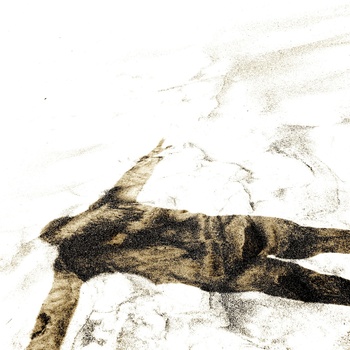 Is there such a term for a Catch-22 with a Catch-22? One of the massive upsides to recording music in the current age is the ability to affordably multi-track in real-time. Studio time and money isn't burned in a studio recording demos and soon-to-be outtakes. Waste is decreased, or is it? Are those first versions unimportant artifacts? Is the final product any better because it was practiced less? As a fan of the Shadow Weaver albums these two collections are an exciting special treat, but I doubt any of these songs would have made a mix tape of mine for an LPD newbie 20 years ago.
Is there such a term for a Catch-22 with a Catch-22? One of the massive upsides to recording music in the current age is the ability to affordably multi-track in real-time. Studio time and money isn't burned in a studio recording demos and soon-to-be outtakes. Waste is decreased, or is it? Are those first versions unimportant artifacts? Is the final product any better because it was practiced less? As a fan of the Shadow Weaver albums these two collections are an exciting special treat, but I doubt any of these songs would have made a mix tape of mine for an LPD newbie 20 years ago.
LPD Bandcamp (click for samples)
The Shadow Weaver albums represented a significant evolution in the band's history. After the untimely passing of Bob Pistoor, the group underwent an expansion, adding guitarist Martijn de Kleer and multi-instrumentalist Ryan Moore to the trio of Edward, Phil, and Neils. Additionally Patrick came back for some stringed appearances and they hooked up with Steven Stapleton, whose talents both as an engineer and visual artist were both utilized. The resulting releases were ripe with juxtaposition. Each was longer in duration than any prior single-LP, however with fewer songs. There was more of a "pop" feel to the songs themselves, however there was strong element of exploration and studio wizardry that permeated throughout. The songs were clearly formulated from longer sessions that were more spacey and experimental in nature than anything the LPDs had done.
Come Out from the Shadows (the first collection) features five pieces of music. The first version of "Stitching Time," originally on Shadow Weaver, has surfaced before on a compilation from Beta-Lactam Ring in the exact same version. It serves as a great introduction to this particular ensemble, provided space for each member to take turns, much like an old jazz ensemble.
The group are in fine form on both grooves "On the Boards" and "Window on the World," each from Malachai. The Dots demonstrate a more "rounded" feel the group had, in comparison to the band's prior history. Ryan's bass provides a wonderful pulse and I enjoy Martjin's elemental guitar work, as it's never overbearing.
The untitled improvisations have less structure, but there are certain bits and pieces which seem familiar, as they evolved into other songs. The first one could be heavily influenced by Asmus Tietchens with its whimsical speedy digital melodies while the beautiful piano, flute, and analog synth interplay of the second one might be from the same sessions that produced "Prague Spring" or "Paris 4AM."
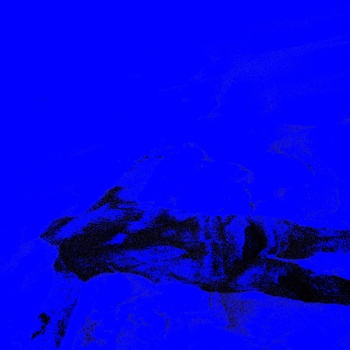 Come Out of the Shadows 2 consists of six untitled session pieces totaling 54 minutes. I can hear the genesis of "We Bring the Day" immediately with the opening one but it, along with the other pieces are noticeably less structured than those songs featured in the other collection. It's a great listen as a whole, however, especially to hear Patrick on viola and violin.
Come Out of the Shadows 2 consists of six untitled session pieces totaling 54 minutes. I can hear the genesis of "We Bring the Day" immediately with the opening one but it, along with the other pieces are noticeably less structured than those songs featured in the other collection. It's a great listen as a whole, however, especially to hear Patrick on viola and violin.
There's a very enjoyable voyeuristic aspect to listening to this set. I easily feel either like a fly-on-the-wall or that I'm actually sitting down on a couch while the group play in front of me. The session pieces have distinct identities but if there were no denotations of "Shadow Session 1," "Shadow Session 2," etc, I wouldn't be able to discern much of a difference while listening start to finish.
Without words or themes is fine by me. I do listen and my mind wanders on its own.For years I have claimed that the age of social networking has made us more antisocial. The advantages of the digital age mean that we can send tracks across cyberspace and save on air and accommodations, but this comes at the cost of social moments such as this. Come Out of the Shadows 2 feels like a social moment frozen in time where a small group of people (one Canadian, some Brits and some Dutch men) met and engaged in a conversation far more entertaining to me than to listen to a panel discussion or watch a television show.
Don't misinterpret my wandering mind, though. This recording isn't a meandering snore or a clumsy mess. Each musician takes turns and collaboratively allow others to play, maintaining a collaborative and democratic feel throughout. Moments build, specially on session 3, where malleted drums and guitar take turns along with synth and violin interplay. Even though the LPDs have run in circles with "anti-musicians" for years, make no mistakes, they have always been authentic musicians and composers at the core. Improvisational work, to me, is best when it is accomplished by musicians who possess the ability and virtuosity to perform within structures and framework.
The digital age is not a complete wash, and here's the catch 22 inside the catch 22. While appeal of outtakes and demo sessions is considerably less broad than main albums, digital distribution can now afford musicians the ability to get the music to those who want. This can be accomplished swiftly and inexpensively without investing loads of money on the manufacturing of product, which may collect dust in storage for the most part. So while the digital age might not produce more sessions captured on these two collections, it has afforded us, the fans, the ability to listen and enjoy these golden moments.
And, to top it off, you can pay whatever you want for both of these sessions on Bandcamp! What a treat!
 
Read More
- Administrator
- Albums and Singles
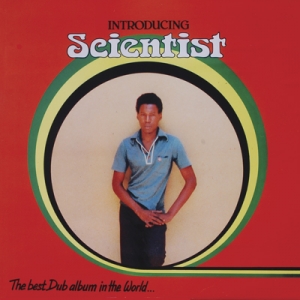 The perfect blending of rhythms, effects, and an oddly bucolic ambiance characterize Scientist's 1980 debut, an effortless masterwork of dub which very nearly earns its self-aggrandizing title in addition to exemplifying why Hopeton Brown was bestowed such an accurate moniker. Nearly all bass and drums plus studio wizardry and scarce half-choruses of organ or guitar, Scientist intimates the future of electronic music to an unsuspecting public in two minute servings, with groundbreaking restraint.
The perfect blending of rhythms, effects, and an oddly bucolic ambiance characterize Scientist's 1980 debut, an effortless masterwork of dub which very nearly earns its self-aggrandizing title in addition to exemplifying why Hopeton Brown was bestowed such an accurate moniker. Nearly all bass and drums plus studio wizardry and scarce half-choruses of organ or guitar, Scientist intimates the future of electronic music to an unsuspecting public in two minute servings, with groundbreaking restraint.
There's an ethereal peace and placidity to the best works of dub, and I feel it here along with the best of Lee Perry or King Tubby (of which Brown was a student). The murmuring, insistent bass, given the perfect center stage, imbues songs like "Elasticated Dub" and "Bali Hi Dub" with an anesthetic sweetness. And trust me, these songs deserve good speakers. The mids and highs rattle along in focused bursts, diverting occasionally into watery delays and subtractive frequency filters while the bass coos on unhindered; patiently, calmly, almost maternally. On my subwoofer, these notes rung out with a persistence that seemed like a heartbeat, interrupted only by well placed snare fills and the ringing electronic hoots of something synthesized I can't seem to identify.
Everything is boxed in, succinct, and only necessary sounds are permitted; trimmed from its vibrant and sometimes overblown reggae source material to a foot-tapping core sound, songs like "Front Line Dub" speak plainly with no distractions, only a pure hook. When a particular guitar melody or organ stab is worth inspecting, Brown pulls everything but the constant bass to a halt and lets the sample play itself out. Hopeton takes these traditional instrumentals and tampers with them so perfectly they play out like live takes from the subconscious of the listener, where the pulsating rhythms like "Jungle Dub" seem to have always existed.
Records like this are why I have always cherished dub over reggae, and why (in my opinion) it has gone relatively farther in musical circles outside its core sound in comparison; dub has always been, to me, a very exact experiment in uncovering shared experiences. Stripped to its simplest means, each instrument and each precise note examined, dub removes the ego and most of the political detritus of reggae and supplants it with forward thinking ideas: putting the producer at the forefront, integrating the studio as an extension of the music, and driving at a smart minimalism which invites a thousand new perspectives on how to craft a record. The best records in dub never squander their precious seconds or lose sight of their ambitions, and for that reason, it's fair to say that The Best Dub Album In The World is almost certainly a contender for such a title.
samples:
 
Read More
- Administrator
- Albums and Singles
 For every stubborn fan who thinks their best period ended with LP5, there are plenty of others who have found something to love in Autechre's post-Confield run. Expectations and ideas about what Autechre should sound like aside, there's actually plenty there to love. But Exai is one of their best albums, period. Forget about their past work. Without the shadow of Tri Repetae hanging over them, these 17 songs prove to be among the most hypnotizing and dynamic the duo has ever made.
For every stubborn fan who thinks their best period ended with LP5, there are plenty of others who have found something to love in Autechre's post-Confield run. Expectations and ideas about what Autechre should sound like aside, there's actually plenty there to love. But Exai is one of their best albums, period. Forget about their past work. Without the shadow of Tri Repetae hanging over them, these 17 songs prove to be among the most hypnotizing and dynamic the duo has ever made.
Nevermind that Exai, Autechre's 11th proper album, comes on two CDs and four LPs. It's neither too long nor too taxing, and anyone with an attention span longer than a goldfish's will find it easy enough to appreciate. Listen to it one disc at a time—or one side at a time—if going through two hours of music all at once sounds unappetizing, but don't trust anyone that says it is poorly edited or too difficult to swallow in one go. Exai is littered with catchy melodies, intricate rhythms, and unexpected twists that make listening to it fun. It's also beefier and more tightly woven than anything Autechre's produced over the last couple of years. Instead of treating them as separate elements, Brown and Booth once again bind their melodies, rhythms, colors, and textures together, creating a geometric sound that gives their songs depth, structure, and a sense of completeness that's long been missing from their music.
Even when songs like "irlite (get 0)" turn on a dime and meander into weightless, pixelated wastes, the duo maintain a feeling of cohesiveness by sticking to the palette and logic they've developed to that point. Exai leaps and turns in on itself this way, jumping freely from tightly wound passages to looser ones without falling apart. Not that there are many places where it could fall apart. Beats resolve into airy, stuttering loops and melodies disappear into a storm of snapping drums, but through all the twists and turns are familiar sounds and signposts: bright synth pads reminiscent of Aphex Twin take center stage on "T ess xi" and "cloudline" bounces with a rubbery melody and vocal effect funky enough for Squarepusher or Daft Punk. Autechre make it their own by using density and unpredictable variation to move the music along rather than tension or the usual structural devices.
But Sean and Rob have never relied on big builds or easy payoffs to make their music exciting. On Exai they've struck a middle road through the roaming looseness of their last two albums and the mechanical logic of well-loved classics like LP5 and Tri Repetae. Finding this road has obviously inspired them, or I don't think they'd present two full of hours of music at once. Not everything on the album is equally excellent—the second disc is definitely the stronger of the two sets—but there's nothing I'd want to cut. Digging into this music, stumbling on its nuances, and letting it work its magic is part of the fun. At two hours long, there's plenty of time to get lost and forget about expectations and preconceived notions. Repeat listens offer up hidden patterns, previously unseen red threads, and a better lay of the land. Exai offers some upfront pleasures, but needs a little time to fully sink in. Once it does it sounds even better.
In fact, Exai's biggest problem isn't its length. It's that albums like LP5 and Tri Repetae came long before it. They're 15 and 18 years old now; as old or older than most people's favorite pets. But these records aren't going to die on us and we can listen to them anytime we want. In the meantime, it's worth giving this new dog some time and attention. It knows a few tricks the old ones didn't.
samples:
 
Read More
- Administrator
- Albums and Singles
 When Luc Ferrari first presented Presque Rien No. 1: Le Lever du Jour au Bord de la Mer (Almost Nothing No. 1: Daybreak at the Seashore) to his colleagues at the GRM, it caused quite a stir. Ironically for such adventurous experimenters in sound, Presque Rien was both too far away from music and too far away from the main principles of musique concrète. However, the four segments of Presque Rien represent some of the most exciting ideas and sounds in the history of electronic music. It goes far beyond an interesting experiment to being a landmark piece of composition whose effects are still reverberating today.
When Luc Ferrari first presented Presque Rien No. 1: Le Lever du Jour au Bord de la Mer (Almost Nothing No. 1: Daybreak at the Seashore) to his colleagues at the GRM, it caused quite a stir. Ironically for such adventurous experimenters in sound, Presque Rien was both too far away from music and too far away from the main principles of musique concrète. However, the four segments of Presque Rien represent some of the most exciting ideas and sounds in the history of electronic music. It goes far beyond an interesting experiment to being a landmark piece of composition whose effects are still reverberating today.
Condensing a day’s recordings from a beach into one side of vinyl with minimal processing or manipulation, the other members of the GRM probably felt Presque Rien No. 1 would be more at home with documentary makers. However, Presque Rien No. 1 was one of the major milestones following John Cage’s 4’33" in music embracing all sounds as valid ingredients for a piece. These noises are not just a moment in time in a sleepy village but music in and of themselves. It is hard to hear now why this approach would be so upsetting, as field recordings have become such a part and parcel of modern composition; Presque Rien No. 1 sounds pleasant, relaxing and contemplative but certainly not controversial.
Ferrari describes it as an "absence of abstract sounds" which is perhaps that is what was most unnerving to the concrète school at the time as the composer or engineer was immaterial to the music itself. Traditionally (it is amazing how fast tradition sets in, even in the most radical edges of the avant garde), sounds generated within the tenets of musique concrète were manipulated to the point where their origins became obscured. By leaving the sounds unprocessed and by using a completely transparent title, Ferrari blew open the doors of the GRM and opened the field of experimental electronic music completely.
Presque Rien No. 2: Ainsi Continue la Nuit dans ma Tête Multiple (Almost Nothing No. 2: And so the Night Continues in my Multiple Head) simply finds Ferrari exploring the nocturnal world as he did the break of day in the first installment. The title brings to mind Finnegans Wake as the night becomes more than just a change in time or available light also a means of focusing the listener on themselves ("a psychoanalysis of his 'nightscape'" in Ferrari’s words). The sounds of insects both near and far create a sense of space as Ferrari’s voice pushes through the curtains of darkness like an internal monologue (Ferrari’s intention was to introduce a new concept into each installment and in this case, he introduces the idea of narration). As shocking as the bareness of sound was to the early proponents of electronic music, today I find the sudden intrusion of ethereal music in the last third of the piece as unsettling. Is this the sudden switch from lying still listening to the nocturnal hum around oneself to a deep, dream-filled slumber? It certainly feels like it and, if that is so, the violent power of the thunderstorm that finishes the piece is as dramatic here as any natural phenomenon.
The third part of the series, Presque Rien avec Filles (Almost Nothing with Girls) shifts attention away from the general sounds of world around us to something more secretive: the sounds of a group of young women having lunch together out on the grass. Combining both a voyeuristic insight to their world with an attempt to fuse with their own viewpoints, Ferrari spans the gap between the slightly pervy outsider with the sensitivity of an artist trying to understand his subject fully. Again, my thoughts turn again to James Joyce but this time Molly Bloom’s famous soliloquy from Ulysses combined with the scene where Leopold Bloom masturbates as a girl lets him look up her skirt on the beach.
Again, there is a greater move away from the straightforward simplicity of the first part of Presque Rien as Ferrari introduces more processing and obvious edits into the work. This is in keeping with Ferrari’s idea of introducing the lie (are the sounds here actually part of the scene being imagined or is it all a stage piece?). The girls’ conversation is simultaneously highlighted and battered by an electrical assault before we sound like we are located somewhere in the vocal chords of one of the girls. This is almost psychedelic in its approach to break down the conceptions and preconceptions of the listener.
The final part, Presque Rien No. 4: La Remontée du Village (Almost Nothing No. 4: The Ascent to the Village) seemingly returns to bare elegance of the original work. This is the sound of Ferrari and his wife Brunhild ascending the hill to the Italian town of Ventimiglia and it is remarkably similar to the moods and feelings of the first piece. However, the sleepy isolation of the 1960s countryside has been lost as sounds from nearby televisions and passing scooters permeate the air around Ferrari’s microphones. Gradually, evidence of Ferrari’s tinkering becomes more and more noticeable as he slowly blends the sounds as they were recorded into something more akin to musique concrète. The climax of this is the powerful intrusion of a cow, preposterously embellished by Ferrari to sound super-real. This mix of documentary and postmodernism sows the seeds for Ferrari’s later masterpiece Far West News but never has Ferrari shown such a perfect control of natural and unnatural components in any of his pieces. It is not as ground-breaking as the original Presque Rien but it is aesthetically sublime.
While all four pieces have been released in dribs and drabs over the years (finally collected in the mammoth and highly, highly recommended 10 CD box set L’Œuvre Électronique), this is the first time the whole lot has been issued on vinyl. As with the rest of the Recollections GRM reissues, Presque Rien has been mastered perfectly. Considering how quiet some of the passages are, I was afraid that surface noise from the vinyl would detract from Ferrari’s work but all fears were unfounded. This sounds fantastic and, aside from the aforementioned box set, is certainly the definitive release of this classic.
 
Read More
- Administrator
- Albums and Singles
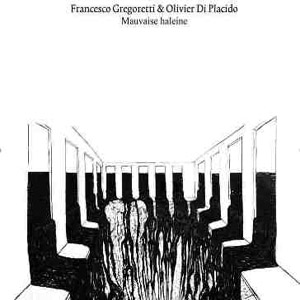 An improvisation for just electric guitar and drums, this album comes together as far more than the sum of its parts, due to Gregoretti's often unconventional, yet solid drumming and di Placido's liberal definition of guitar playing. It most certainly makes for an exhausting release as it rarely drops in intensity, resulting in a chaotic, yet fascinating album.
An improvisation for just electric guitar and drums, this album comes together as far more than the sum of its parts, due to Gregoretti's often unconventional, yet solid drumming and di Placido's liberal definition of guitar playing. It most certainly makes for an exhausting release as it rarely drops in intensity, resulting in a chaotic, yet fascinating album.
Olivier di Placido's guitar work is drastically different than others who push the boundaries of the instrument, by working with detached necks, broken strings, shorting out the electronics, and so forth, resulting in sounds that rarely sound like they were created with the venerable instrument.Only at times does the identifiable sound of a guitar string being plucked slip through, such as on the opening "Pulci Nella Batteria" and cast within the bubbling murk of "Cascano Pentole".
The former piece is one that stays a tornado of spastic, clattering disorder, but the latter demonstrates a more fleshed out sense of composition.First leading off at a slower pace before slowly piling noises on, the drums eventually going all out on heavy kicks and resonating snares resulting in a satisfying climatic freakout in the closing moments.
"Van Haleine" also showcases this more structured sensibility: from its lurching rhythm that slowly drives along a noisy, flatulent guitar into a morass of pounding drums and eventually shrill, painful cymbals filling the mix at the end.Often though the structure is a bit more hidden and subversive:"So Do I" has a seemingly scattershot guitar squall for the most part, but a tight rhythm section sneaks its way in every so slightly.
Not to discount Gregoretti's drumming at all, because he does an excellent job of passing between explosive blast beats and complex polyhrythms, but di Placido's guitar abuse is what draws the most attention.On "Absurd Blue" he somehow mangles the instrument to sound like a slowly dying jackhammer, while "Repugnant Green" results what sounds like a rainstorm hitting an electrical plant.
As a whole, Mauvaise Haleine is a dissonant, occasionally disjointed sounding work, but it is for that reason that it excels.Like the best of these improv based combos, there are a number of times that the chaos seems to be getting out of control, but is reigned in at just the right time, keeping everything with some semblance of structure.Coupled with the head scratchingly odd employment of guitar and the result is an album that may not be suitable for all moods, but when the situation calls for it, it is splendid.
samples:
 
Read More
- Administrator
- Albums and Singles
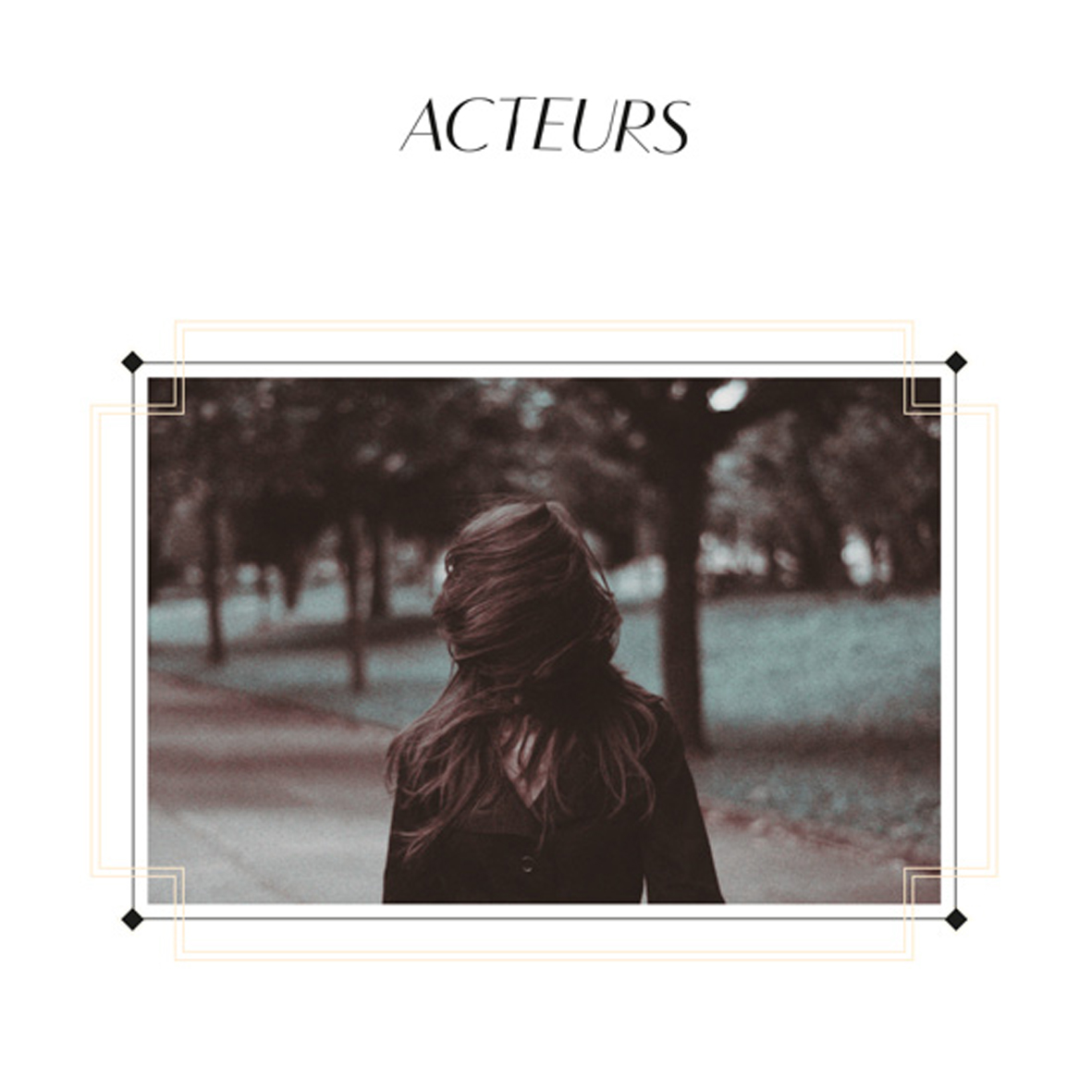 This is the debut release by Disappears' Brian Case and White/Light's Jeremy Lemos and it is a hugely promising one, deftly mixing together propulsive post-punk, electronic noise, industrial rhythms, and Case's wonderfully deadpan drawl to create something thoroughly bad-ass and charismatic.  Unfortunately, the duo's initial creative flurry seems to have yielded very few real songs, making this "mini-album" feel an awful lot like an awesome single with a handful of less-inspired bonus tracks tacked on.
This is the debut release by Disappears' Brian Case and White/Light's Jeremy Lemos and it is a hugely promising one, deftly mixing together propulsive post-punk, electronic noise, industrial rhythms, and Case's wonderfully deadpan drawl to create something thoroughly bad-ass and charismatic.  Unfortunately, the duo's initial creative flurry seems to have yielded very few real songs, making this "mini-album" feel an awful lot like an awesome single with a handful of less-inspired bonus tracks tacked on.
It is rare to see a band put their best foot quite as nakedly as Acteurs do on this release, as it opens with its greatest moment and seems to grow incrementally less compelling with each song that follows.  Fortunately, that opening song ("Cloud Generating") is an absolutely stellar one.  In fact, it fleetingly made me think that I had just discovered one of my new favorite bands.  I also felt quite similarly about the slower, sexier follow-up ("Lowow").  Very few albums start as strongly as this one.
That initial euphoria diminished a bit with subsequent listens, however, as the duo's flaws gradually became a bit more apparent.  Still, Acteurs' aesthetic definitely hits the mark for me when Case and Lemos manage to write actual songs, which is something they do all too rarely.  In fact, they arguably only do it just once.  "Lowow" reprises everything great about its predecessor, again offering up a throbbing electronic beat, dissonant electronic flourishes, dub-influenced echo effects, obsessive repetition, and Case's wonderfully world-weary and debauched-sounding vocals, but loses a bit of its luster when it becomes clear that the lyrics consist entirely of "low low low low low" over and over again.  I still love it–I just wish Case had tried a bit harder (clearing his throat at the beginning was a nice touch though).
After that, the duo ill-advisedly dispense almost entirely with both vocals and beats, bringing them back only for the much more abstract "Golden Rabbit."  While the alternately swelling, pulsing, and throbbing soundscapes that remain are certainly likable in their own right, the decision to include so many of them leaves me completely baffled.  For one, Case's vocals are essential to the distinctiveness and personality of the band.  Secondly (and more importantly), I cannot begin to comprehend why Acteurs would devote 2/3 of their debut album to industrial-damaged ambiance after hitting upon such a beautifully executed, attention-grabbing blend of Gang of Four, Throbbing Gristle, and GVSB.  As enjoyable as some of the abstract pieces are, it is very hard to see them as anything other than filler after the duo had unleashed such a striking and near-perfect one-two punch of an opening.
I am also a bit mystified by Case's cryptic/seemingly nonsensical lyrics.  I understand that he is (successfully) going for both minimalism and attitude, but I feel like he could have done much better than "low low low low low" or "golden rabbits, lucky habits" on a release the features roughly four lines in its entirety.  Still, while perplexing artistic decisions abound, they do not eclipse the fact that Acteurs have definitely hit upon something quite wonderful.  "Cloud Generating" and "Lowow" are both great songs–hopefully there will someday be more coming, as I would much rather see this album as the uneven birth of a killer new band than as an exasperating glimpse of what might have been.
 
Read More
- Administrator
- Albums and Singles
 This unusual split is basically just an excuse to release a handful of lost songs from around the time of Dead C's Eusa Kills album (1989), but that is just fine by me (particularly since I like Rangda too).  It is an inspired pairing for a number of reasons, but the primary one is that the two bands could not possibly sound more wildly different: the Rangda half sounds like a trio of skilled musicians intuitively improvising together, while the Dead C half is an endearingly shambling mess.  Despite that yawning stylistic chasm (and a two decade span between the sessions), both bands offer at least one song that beautifully highlights what they do best.
This unusual split is basically just an excuse to release a handful of lost songs from around the time of Dead C's Eusa Kills album (1989), but that is just fine by me (particularly since I like Rangda too).  It is an inspired pairing for a number of reasons, but the primary one is that the two bands could not possibly sound more wildly different: the Rangda half sounds like a trio of skilled musicians intuitively improvising together, while the Dead C half is an endearingly shambling mess.  Despite that yawning stylistic chasm (and a two decade span between the sessions), both bands offer at least one song that beautifully highlights what they do best.
The whole idea of "lost" Dead C songs is very amusing to me, as this split makes it very clear that the line between an actual Dead C song and a recording of them aimlessly messing around in rehearsal is probably a very blurry one indeed.  That is not to say that these four songs are not likable, but things like hooks, structure, melody, fidelity, and tightness have never been the trio's greatest talents.  Rather, they seem to have been put on earth solely to sound gloriously wrong at all times and to seem extremely cool while doing it.  Both "Eusa Kills" and "Tomorrow" are ideal testaments to that unique brand of genius, as the former is basically an avalanche of over-the-top distortion and half-mumbled vocals propelled by a skeletal drum machine beat, while the latter unleashed some impressively ugly and anti-virtuosic guitar squall over a jazzy shuffle.  The remaining two pieces, however, fall a bit short, amounting to little more than prickly lo-fi ambiance and something that sounds like a decontextualized live guitar solo shorn of the surrounding song.
For their side, Rangda offer up just two pieces: the lengthy "Gracilaria" and the shorter "Sancticallist," one of which highlights everything wrong with the trio and one which highlights everything right.  Sadly, the longer one is the misfire, as Sir Richard Bishop and Ben Chasny do a whole lot of sleepy noodling before eventually erupting into a woefully unearned crescendo.  Chris Corsano gamely tries to inject some excitement into the proceedings by bringing his usual intensity, but he has virtually nothing to work with–it just sounds like two boring guitar solos over the top of a good drum solo rather than anything coherent.  Curiously, "Sancticallist" is not overtly all that different, but everything somehow locks together beautifully into a condensed, simmering, and oft-explosive whole.  It is remarkable just how dramatic the difference between improvisations can be with no clear reason, as the magic is either there or it is not, regardless of the strength of the underlying motifs: "Sancticallist" is simply great, while "Gracilaria" is clearly not.
Naturally, there is no getting around the fact that this is a very minor release within both bands' discographies, but that does not diminish it at all, as it does not pretend to be anything more.  Essentially, Ba Da Bing located a handful of Dead C songs that no one has heard, then decided to make them available in a stylish and inspired way (a limited vinyl-only release with striking cover art and a similarly cool band on the flipside).  As such, this is kind of a perfect release: casual fans can safely pass it by knowing that there is nothing truly essential or revelatory to be found, while more devout fans will undoubtedly be very pleased with both the music and the physical object.
Read More
- Administrator
- Albums and Singles
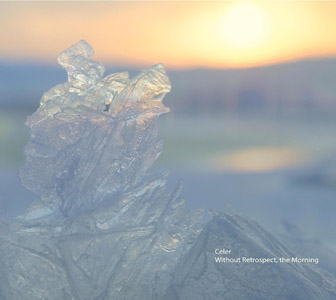
 
The hushed sound of "Dry and Disconsolate" hides glistening rising and falling tones, comfortably sparse and airy.The extremely distant hum of "Variorum of Hierophany" is reminiscent of Bernhard Günter in its approach, but even without a distinct melody it is less dry and clinical than his work, which continues as it blends into "A Landscape Once Uniformly White".
The two closing pieces are the only ones that have a more dynamic sound, not requiring a meditative approach to listening while still remaining understated.Long puts glassy organs up front on "Distance and Mortality,"resonating and sustaining throughout the entire piece. It shifts, changes, and evolves frequently to stay fascinating."With Some Effort, the Sunset" follows suit, with church bell like echoes leading off the 13 minute long piece.It is beautiful and delicate, with an icy but light and floating drift to it, fading in and out of focus.
Because of my own self-sustained abstinence from following Celer's exponentially growing discography too closely, I cannot speak as to how this work fits in with the most recent releases.On its own, Without Retrospect does stand out from the other albums I have heard with its quiet, faint nature.Rather than resembling other ambient projects, its extreme minimalism makes the soft tones and melodies that appear all the more powerful, resulting in a bare but beautiful snapshot of icy lands and frigid air.
samples:
 
Read More
- Administrator
- Albums and Singles
![]() Lee Bartow's Navicon Torture Technologies project came to a lavish end with the double album The Gospels of the Gash in 2009, after which he adopted the Theologian moniker and continued on. A special limited edition was released alongside, with an additional two discs of exclusive remixes and collaborations with a slew of artists both well known and just getting established. Your Suffering Will Be Legendary reproduces those additional discs, which function nicely on their own, thankfully not relegated to be forgotten bonus material.
Lee Bartow's Navicon Torture Technologies project came to a lavish end with the double album The Gospels of the Gash in 2009, after which he adopted the Theologian moniker and continued on. A special limited edition was released alongside, with an additional two discs of exclusive remixes and collaborations with a slew of artists both well known and just getting established. Your Suffering Will Be Legendary reproduces those additional discs, which function nicely on their own, thankfully not relegated to be forgotten bonus material.
Malignant Records, Handmade Birds
At two discs and about two and a half hours in length, Your Suffering is an intimidating work.Bartow's art has always sat in a genreless space that touched upon all forms of harsh electronics without ever fitting into one specific style, and this material is no different.While there are exceptions, the first disc stays more in the traditional NTT realm of raw, harsh electronics and bleak walls of sound, with the second one branching out a bit more to work with rhythms and more conventional structures.
Pieces like "Everything I Have Is Yours" (with Aun) and "An Exercise in Pain" (with Autoclav 1.1) keep things understated and subtle, the former using repetitious hollow echoes as a base for lush synth pads, while the latter works in a crumbling, thin marching-band like rhythm, moving into film score territory.The long "I Won't Survive in a World Without You" (with Covet) also goes for cinematic aspirations, beginning with simple static and simple piano melodies, an unpleasant cut-up voice sample sets a dark tone that is later replaced by bombastic string synth leads and high drama.
On disc two, "Gumrot (Decaying Face Edit)" (with Fragment King) immediately grabbed me with its synthetic dubby basslines and skittering percussion that eventually launches full bore into a more dissonant take on the 1990s ambient dub sound.Similarly, "Pillars of Flesh" (with Eidulon) has a dark opening that eventually gets paired with heavily distorted vocals and a stiff drum machine loop that makes for a welcome throwback to the first two Scorn albums.
All of the material is quite good, with the only real shortcomings to be found with the pieces that just blend more into the background rather than standing on their own individual sounds."In the Folds of the Flesh" (with Kristoffer Nyströms Orkester) heavily utilizes musical loops make for a distinct sense of repetition, but the amount of change and evolution is not enough to keep it engaging."Sonnenaufgang" (with Troum) uses shrill noise and cavernous reverbs are done well enough, but simply does not stand out amongst the more unique pieces.
samples:
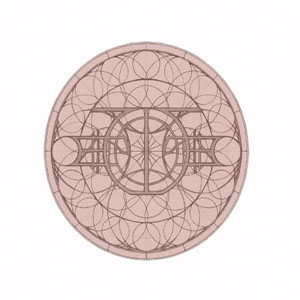
Theologian is Bartow's post-NTT project and although it sonically covers much of the same terrain, it has a different, less overly dark sensibility to it."Fighting for Notion" begins deep, resonating low and bursts eventually get paired with a processed, tinny rhythm that nicely moves into harsher noise territory but ends on some more restrained ambient synth patterns.
"All I See is You" begins more in the realm of overdriven harsh electronics before pulling back to let some heavy synth layers move forward, met with some distorted, grimy drum loops that could have been lifted off of an old Skinny Puppy album."Finding Comfort in Overwhelming Negativity" is less overtly rhythmic, but keeps a structure via a heavily distorted synth pattern that fights off the occasional bit of melody.With the buried, distant vocals, and overall structure, it comes across as somewhat more repetitious, but in an effective, composed manner.
Having not heard the full package where Your Suffering first appeared, hearing it on its own makes me quite glad that it was issued separately, because it simply was too strong of material to not be available.All of the artists who collaborated fitting in nicely with one another, with the new projects occasionally outshining some of the old veterans.At the same time, his new material as Theologian has a different, almost more matured and nuanced sound to it, emphasizing the best part of NTT's past, making both of these releases extremely satisfying, if somewhat oppressive to listen to in one setting
samples:
 
Read More
- Administrator
- Albums and Singles
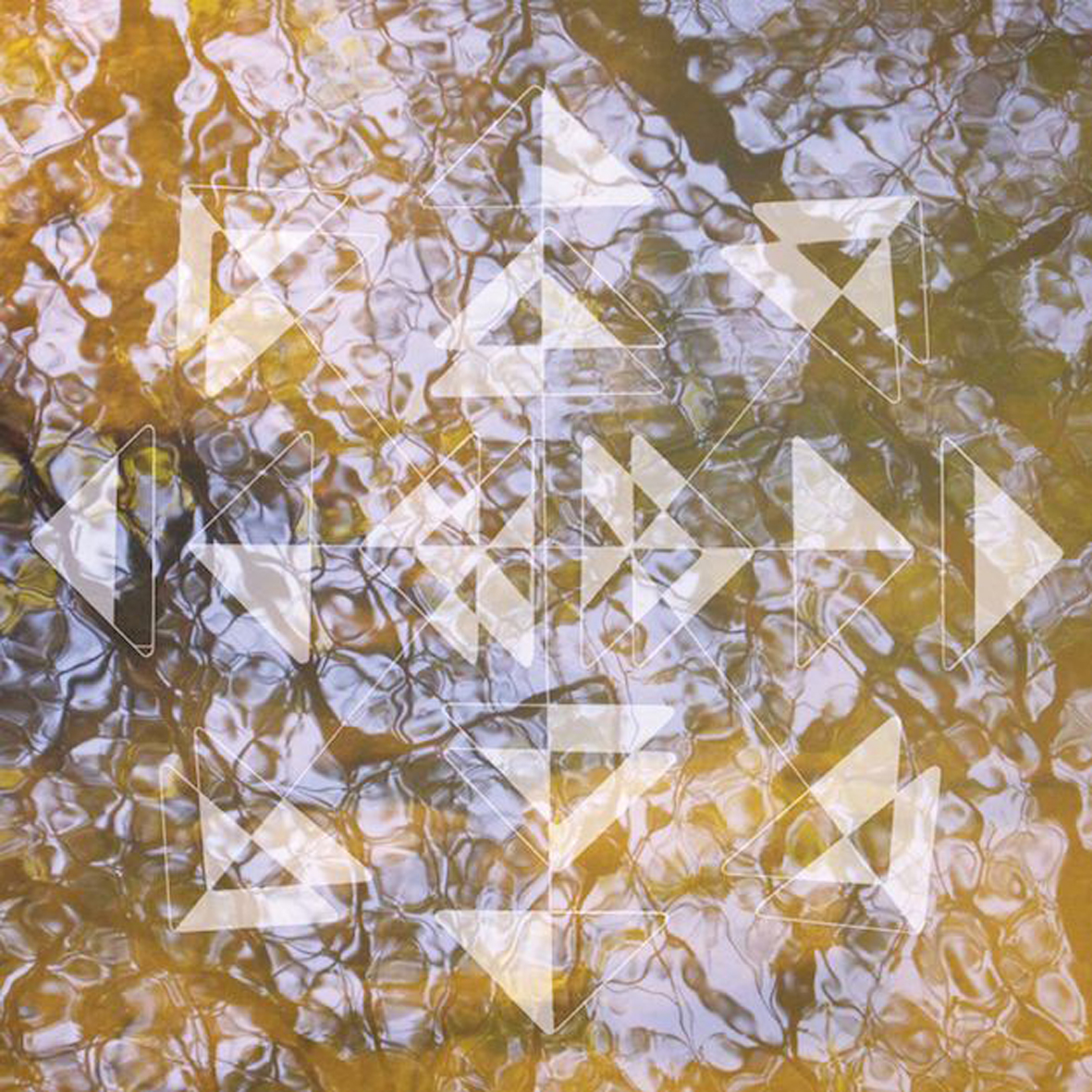 While I could not possibly be more weary of synthesizer albums at this point, one still comes along every now and then that miraculously breaches my wall of indifference.  This aptly titled effort is one such album, as Holtkamp has unleashed a burbling, radiant, and psychedelic tour de force.  The sheer candy-colored brightness of Koen's vision still remains a bit of an obstacle for me (as it was earlier this year with Mountain's Centralia), but Liquid Light Forms' dazzling and dense vibrancy is sometimes enough to transcend my normal aesthetic preferences.
While I could not possibly be more weary of synthesizer albums at this point, one still comes along every now and then that miraculously breaches my wall of indifference.  This aptly titled effort is one such album, as Holtkamp has unleashed a burbling, radiant, and psychedelic tour de force.  The sheer candy-colored brightness of Koen's vision still remains a bit of an obstacle for me (as it was earlier this year with Mountain's Centralia), but Liquid Light Forms' dazzling and dense vibrancy is sometimes enough to transcend my normal aesthetic preferences.
Holtkamp has a long history as an eccentric electro-acoustic omnivore, but he takes an uncharacteristically purist stance for this release: all three pieces were created almost entirely from modular synthesizers and sequencers.  Some inconspicuous guitar creeps into the album's closer ("Hudson Static"), but overall emphasis is quite squarely upon gloopy, colorful artificiality.  Normally, that is the sort of thing I tend to run from, but it is evident from the very first minute of "Battenkill" that Holtkamp is no mere dilettante indulging an analog fetish.
It opens with a marginally promising throbbing drone, but that proves to be merely a backdrop for a flurry of gurgling and sputtering electronic warmth.  It brings to mind a bubbling underground lake of molten rock, but in an unearthly, beautiful way rather than a menacing way.  In fact, if "Battenkill" had just stopped and held its ground there, it would easily be one of the most perfect pieces of music that I have heard in a long time.  Koen had other plans though, which is where Liquid Light Forms gets somewhat thorny for me: he is just as likely to be brutally cheery as he is to be great and he is often restless enough to be both within the same song.
As a result, the last ten minutes of "Battenkill" are devoted to over-caffeinated, major key throbbing and sputtering space music that maintains too rapid a pace to be enjoyable.  I suppose it is complex and unpredictable enough to be impressive instrumentally, but I am not the target demographic for such feats.  It settles down enough to win me back again by the outro, but the damage has already been done.
"Hoosick" offers up a similar rainbow of Day-Glo synth psychedelia, but its lazy pace and lush, sun-dappled central motif make it quite likable and it becomes increasingly so as it evolves into something a bit more twinkling and melancholy.  It is an entirely successful piece, but the lack of any derailment is balanced out by the fact that it never quite flirts with greatness either.  It is merely good.
The album winds down with "Hudson Static," a ten-minute piece recorded live at Brooklyn club Shea Stadium.  Thankfully, it has a darker, heavier tone than its predecessors.  The sound quality is not quite on the level of the studio pieces, but the added grit and hiss work in Koen's favor: it is basically just a thick, ominous drone monolith buffeted with space-y flanges and furious twinkling, so pristine production would probably have only served to neuter it a bit.  Holtkamp happily stays on course for the duration, which ends the proceedings on a strong note.
After several listens, my feelings about Liquid Light Forms remain somewhat complicated, as both my longstanding hostility towards "happy" music and the inherent limitations of a pure modular synth album come into play.  While it sometimes veers dangerously close to "music strictly for other musicians to appreciate" territory, it is hard to imagine a better album emerging from such a constrained palette (especially a conspicuously river-themed one).  More importantly, the first half of "Battenkill" was transcendent enough to reel in a genuinely skeptical and near-hostile listener in myself, which is no small accomplishment.  If that momentum had held, this would have been quite an amazing album indeed.  Instead, it is simply a great, multilayered synthesizer performance that teases at the potential for something more, which is just fine too.
 
Read More

